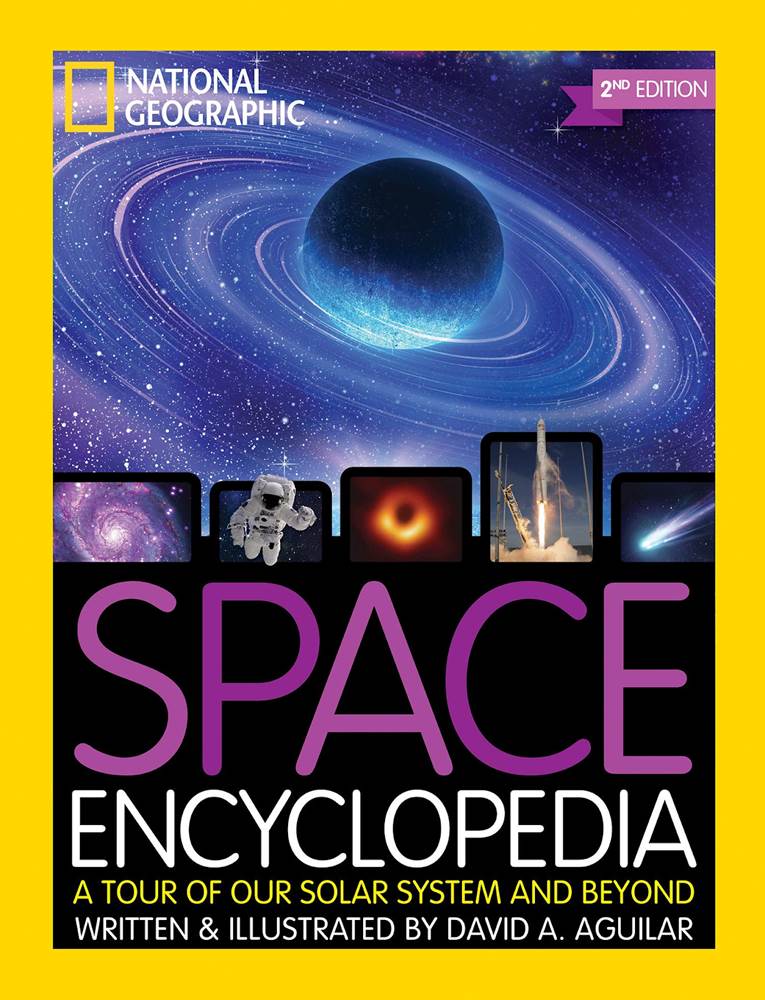Book Review: National Geographic Space Encyclopedia 2nd Edition Gives Kids an Engaging Tour of Our Solar System and Beyond
The SpaceX Falcon 9 is planning to take its first crew of astronauts to the International Space Station today (November 15th, 2020) from the NASA Kennedy Space Center. With our attention turned to the skies, National Geographic has an updated resource for kids and parents looking to expand their space exploration curriculum. The Space Encyclopedia 2nd Edition by David A. Aguilar makes readers feel like an astronaut, taking them to uncharted regions of our solar system and beyond!
While it’s called an encyclopedia, it reads more like a kid-friendly class led by the best teacher imaginable. Like Carl Sagan in Cosmos, Aguilar puts readers on a fictional ship, replacing “The Ship of the Imagination” with “Stella Nova” (which means “New Star”). This section, called “Tour of the Solar System,” takes up the biggest portion of the book and has a lot of fun with the material. It delivers facts about each planet, moon, and significant region of our solar system while also giving a ship log of how long it’s taken us to get there. A mix of photos and realistic artistic renderings (many of which are also by David A. Aguilar) bring the words to lift.
In the event that you’re eyeing National Geographic’s Space Encyclopedia for a child who already knows a lot about our solar system, “To the Stars and Beyond” takes them deeper into the Milky Way and dives deep into some really cool space science. From types of stars and their lifecycle to the mystery of black holes and the probability of other dimensions, this section really broadens the reader’s horizons and opens their minds to possibilities that could redefine what we know about physics.
The last two sections take science fact to explore some realistic outcomes of finding life in outer space and a future in which mankind has colonized mars and beyond. Throughout the entire book, readers will get some pop-up fun facts, digestible bits of space and earth history, tips on how to find and see what you just read about in the night sky, and profiles on important explorers who made significant contributions to what we know about space.
With a lot of parents trying to expand their child’s at-home curriculum during distance learning, National Geographic’s Space Encyclopedia 2nd Edition is a great choice for kids interested in learning more about space. It presents a lot of great information in an easy-to-digest format. But best of all, it makes learning about space a lot of fun!

